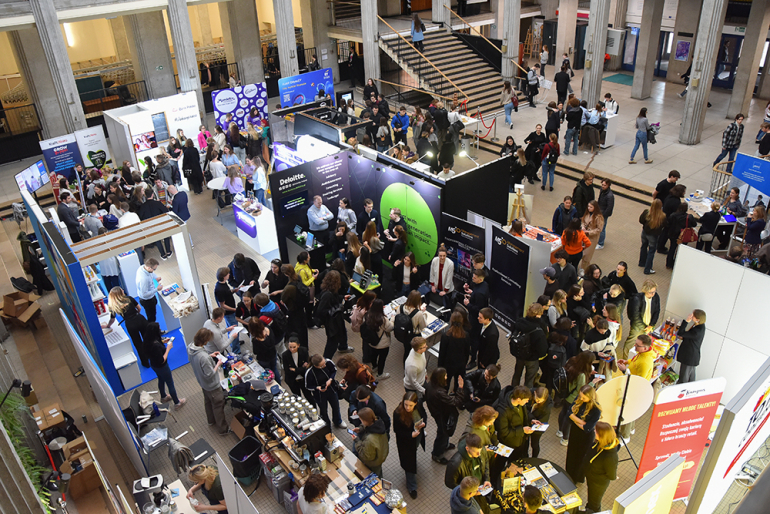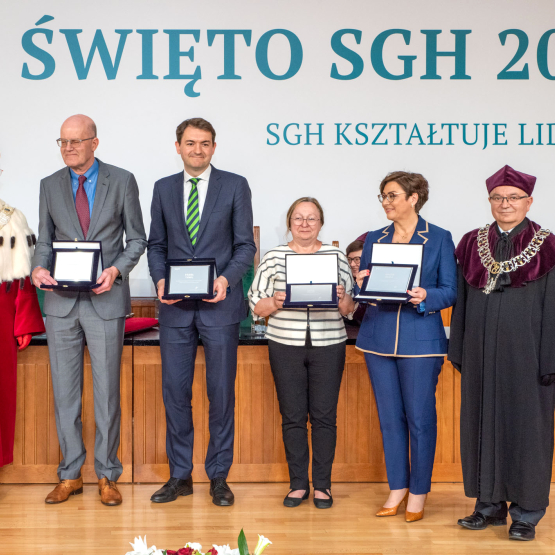
In the era dominated by mobile applications, do face-to-face contact with a potential employer and events like job fairs still make sense?
Recent years have shown how many processes can be successfully optimised through new technologies. Cloud computing is no longer exotic, even if understanding of its data processing model is not always straightforward. We can now conduct meetings, conferences, practical training, recruitment and onboarding processes online. Contracts can be signed and documents circulated without printing a single page. Even getting a prescription is now just a tap on the phone rather than a morning rush to the nearest clinic. On one hand, this has become our everyday reality, on the other, it creates a kind of bubble and oversimplification.
The recent surge in AI tools such as ChatGPT further enhances this transformation. They enable rapid analysis and summarisation of materials, create marketing content, draft cohesive and engaging articles and assist in data analysis by delivering more accurate and context-aware insights.
Now, let us compare this world of technological progress, convenience and digital abundance with a traditional but accessible way of meeting future employers—job fairs. This brings us back to our original question: are job fairs a relic of the past or an enduring tradition? It may sound like navigating with a paper map in the age of GPS. But could it be that, despite the rapid development of digital solutions, traditional networking still offers significant benefits for both job seekers and employers?
WHAT ARE THE BENEFITS OF JOB FAIRS?
First and foremost, job fairs offer an opportunity not just to gain but also to verify knowledge about a prospective employer. While the internet bombards us with information that shapes our perceptions, an in-person conversation allows us to confirm our assumptions and gather additional, more detailed insights. A convenient form—providing access to multiple employers in one place—also saves job seekers valuable time.
Besides getting to know a company better, job fairs also help candidates stay informed about the current labour market trends, enabling more strategic career planning. In a less formal and stressful setting, attendees can ask recruiters about the hiring process, job openings and even get a sense of the company organisational culture. With both recruiters and interns present, job seekers have a unique chance to ask questions that could make their future job interviews easier. They can also learn practical, insider tips from slightly more experienced peers—insights that are rarely found online.
DOES CHATGPT SEE IT DIFFERENTLY?
Apart from the well-known and still relevant benefits of job fairs, ChatGPT consistently highlights that despite the digitalisation of networking and recruitment, direct personal interactions remain invaluable. It points out that these events benefit both sides: employers can gain insight into the expectations and needs of the younger workforce while also keeping an eye on industry trends and competitors.
Interestingly, AI also emphasises the advantage of personal impressions and networking. It is hard to argue with this. A face-to-face meeting helps employers remember candidates better while allowing job seekers to form their own impressions of a company atmosphere and culture. No app or algorithm, no matter how advanced, can fully replace that.
“THE BEST WAY TO PREDICT THE FUTURE IS TO CREATE IT”
Peter Drucker’s words resonate strongly here. The direction we take and how we utilise available tools and technologies is up to us. However, for now, the concern that job fairs will be entirely replaced by digital alternatives can be set aside. Each semester, universities and cities host numerous career-related events, from general job fairs to industry-specific ones.
At SGH, the tradition holds strong. Each year, many job fairs take place within the university walls, with Career Day (autumn) and the SGH Student Job Fair (spring) standing out as key events. These two staples on the academic calendar attract crowds of students and top employers alike.
Perhaps in the future, job fairs will transition into the metaverse, allowing us to meet with companies in a virtual Main Hall, no matter where we are in the world. Maybe AI-driven applications will match candidates with their perfect employers based on complex algorithms analysing our digital activity. After all, chatbots already conduct preliminary interviews.
For now, both ChatGPT and we agree: the best approach is a synergy between available technology and direct human interaction. This remains the most effective way to maximise benefits to everyone involved.
PATRYCJA DUTKIEWICZ, former Director of the Centre for Corporate Relations, SGH
PHOTO: Up to 4,500 people visit SGH during the job fair. PIOTR POTAPOWICZ, SGH



